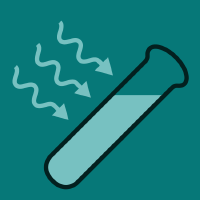Topic Menu
► Topic MenuTopic Editors

2. Department of Chemical and Environmental Engineering, University of Zaragoza, 50009 Zaragoza, Spain
3. Centro de Investigación Biomédica en Red (CIBER-BBN), Instituto de Salud Carlos III, 28049 Madrid, Spain


New Materials and Advanced Applications in Photocatalysis
Topic Information
Dear Colleagues,
It is our pleasure to welcome you to this new, ambitious, and inspiring interdisciplinary Topic entitled “New Materials and Advanced Applications in Photocatalysis”. Photocatalysis has become one of the most rapidly developing fields of research due to emerging energy and environmental problems facing humanity. It is believed that well-designed, synthesized, and stable photocatalysts could both purify the environment and convert solar energy into fuels and electricity. However, multiple efforts must be taken to obtain efficient materials for commercial applications. Accordingly, numerous studies have been carried out on a range of topics, including (i) the design, synthesis, and characterization of materials, nanomaterials, and molecular photocatalysts, (ii) clarification of photocatalysis mechanisms, (iv) application of co-catalysts, nanocomposites, organic–inorganic hybrids, bioinspired materials, and heterojunctions, (v) photoreactor design and modeling, and (vi) potential scale-up and commercialization of photocatalytic reactions. In addition, the 21st century is also bringing a wide plethora of novel potential research fields where photocatalysis may play a significant role, such as nanomedicine, circular and sustainable economy, green chemistry, or green energy production. Therefore, our aim with this interdisciplinary Topic issue is to gather contributions from a significant number of MPDI journals such as Catalysts, Materials, Nanomaterials, Molecules and Photochem, highlighting various aspects of photocatalysis. We look forward to receiving your contributions (both original research papers and reviews) as soon as possible to present your excellent findings to a broad audience via open access publication and provide the research community with new perspectives on photocatalysis and their developing materials and applications.
Dr. Jose L. Hueso
Prof. Dr. Ewa Kowalska
Prof. Dr. Zhishun Wei
Topic Editors
Keywords
- mechanism studies
- photocatalyst design
- morphology-governed activity
- vis-NIR responsive materials
- nanocomposite photocatalysts
- green fuels/energy
- artificial photosynthesis
- water splitting
- environmental purification
- theoretical studies on photocatalysis
- photocatalyst recycling and recovery
- photoreactor design
- scale-up of photocatalytic systems
- plasmonic photocatalysis
- photocatalysis for medical applications
- carbon-based photocatalysts
- photoelectrochemistry
- hybrid photocatalysts
- solar photocatalysis
Participating Journals
| Journal Name | Impact Factor | CiteScore | Launched Year | First Decision (median) | APC |
|---|---|---|---|---|---|

Catalysts
|
3.9 | 6.3 | 2011 | 14.3 Days | CHF 2700 |

Materials
|
3.4 | 5.2 | 2008 | 13.9 Days | CHF 2600 |

Molecules
|
4.6 | 6.7 | 1996 | 14.6 Days | CHF 2700 |

Nanomaterials
|
5.3 | 7.4 | 2010 | 13.6 Days | CHF 2900 |

Photochem
|
- | - | 2021 | 23.4 Days | CHF 1000 |

MDPI Topics is cooperating with Preprints.org and has built a direct connection between MDPI journals and Preprints.org. Authors are encouraged to enjoy the benefits by posting a preprint at Preprints.org prior to publication:
- Immediately share your ideas ahead of publication and establish your research priority;
- Protect your idea from being stolen with this time-stamped preprint article;
- Enhance the exposure and impact of your research;
- Receive feedback from your peers in advance;
- Have it indexed in Web of Science (Preprint Citation Index), Google Scholar, Crossref, SHARE, PrePubMed, Scilit and Europe PMC.

